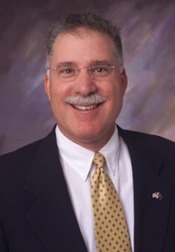An Indiana Clinical and Translational Sciences Institute community partnership that helped local leaders improve health outcomes in Clinton County is expanding its model in other rural counties in Indiana.
Health coalitions in Carroll, Gibson, Harrison and Steuben counties have each worked for the past year with a consultant from Healthy Communities of Clinton County Coalition—a relationship facilitated and funded by the Indiana CTSI, which has also provided financial support to assist with leadership development and communication of these coalitions’ opportunities and programs.
Between 2011 and 2015, local health advocates at Healthy Communities of Clinton County Coalition helped improve their county’s overall health rankings from 47th to 31st out of 92 Indiana counties. The county also showed significant improvement in rankings of social and economic factors (61st to 46th) and the physical environment (72nd to 24th). During this time, the Indiana CTSI’s Community Health Partnerships (CHeP) program teamed up with Healthy Communities executive director Carol Price to learn more about how her organization was able to support these improvements.

Dennis Savaiano, PhD
“Clinton County had a lot of the ideal components of what a successful coalition would be, and great examples of individuals and groups that had become healthier,” said Dennis Savaiano, PhD, associate director of CHeP and Virginia C. Meredith Professor of Nutrition Policy at Purdue University. “We analyzed what Clinton County did that was successful in moving people toward healthy behaviors and programs.”
The ultimate goal, Dr. Savaiano said, was to develop best practices that could be replicated and expanded in counties across Indiana. That’s why it was important to provide the other counties with access to Price and her expertise to help them move their coalitions forward, he said.
Price, who started Healthy Communities in 2009, said working with CHeP was beneficial for the coalition as well.
“We’re just busy doing things, doing what needs to be done,” Price said. “We’re not worrying so much about numbers, although we need numbers because we’re completely funded by grants. We realized CHeP could help us analyze what we had created as an organization that had a real ability to make change in the community.”
Price said data analysis provided by CHeP helped Healthy Communities be more competitive when applying for the grant funding that helps the coalition implement healthy changes in the community, such as creating smoke-free public areas and businesses, convincing politicians to prioritize health initiatives, creating more bicycle lanes and sidewalks, and helping residents who are non-native English speakers better understand their health insurance policies.
Healthy Communities has also received grant funding from CHeP and is working with the nursing program at Purdue and professor Vicki Simpson to provide complimentary health screenings for residents every month at different locations throughout the community.
“It has really opened up our eyes to the idea that partnering with universities can help us,” Price said. “Healthy Communities has appreciated our relationship with Indiana CTSI and CHeP because it has given us a different way of thinking about our work.”
In turn, Price and Healthy Communities have helped teach researchers at CHeP and the Indiana CTSI about what works when trying to improve health at the local level.
Dr. Savaiano said the partnership has taught CHeP a lot about what it takes to build a sustainable community health coalition.
“For example, coalitions really need more than one leader because people move, they transition, they go on leave, they retire,” he said. “You have to have a succession plan and multiple people to step up or you face having no leadership.”
This project has been and continues to be a great example of CHeP’s mission to connect academics and communities, Dr. Savaiano said.
“Clinton County has been a wonderful case to study and support,” he said. “And now we’re moving from supporting and studying Clinton to growing successful coalitions across Indiana. In the end, the goal is to improve the health of Hoosiers and have local people take charge of the health in their own communities.”
